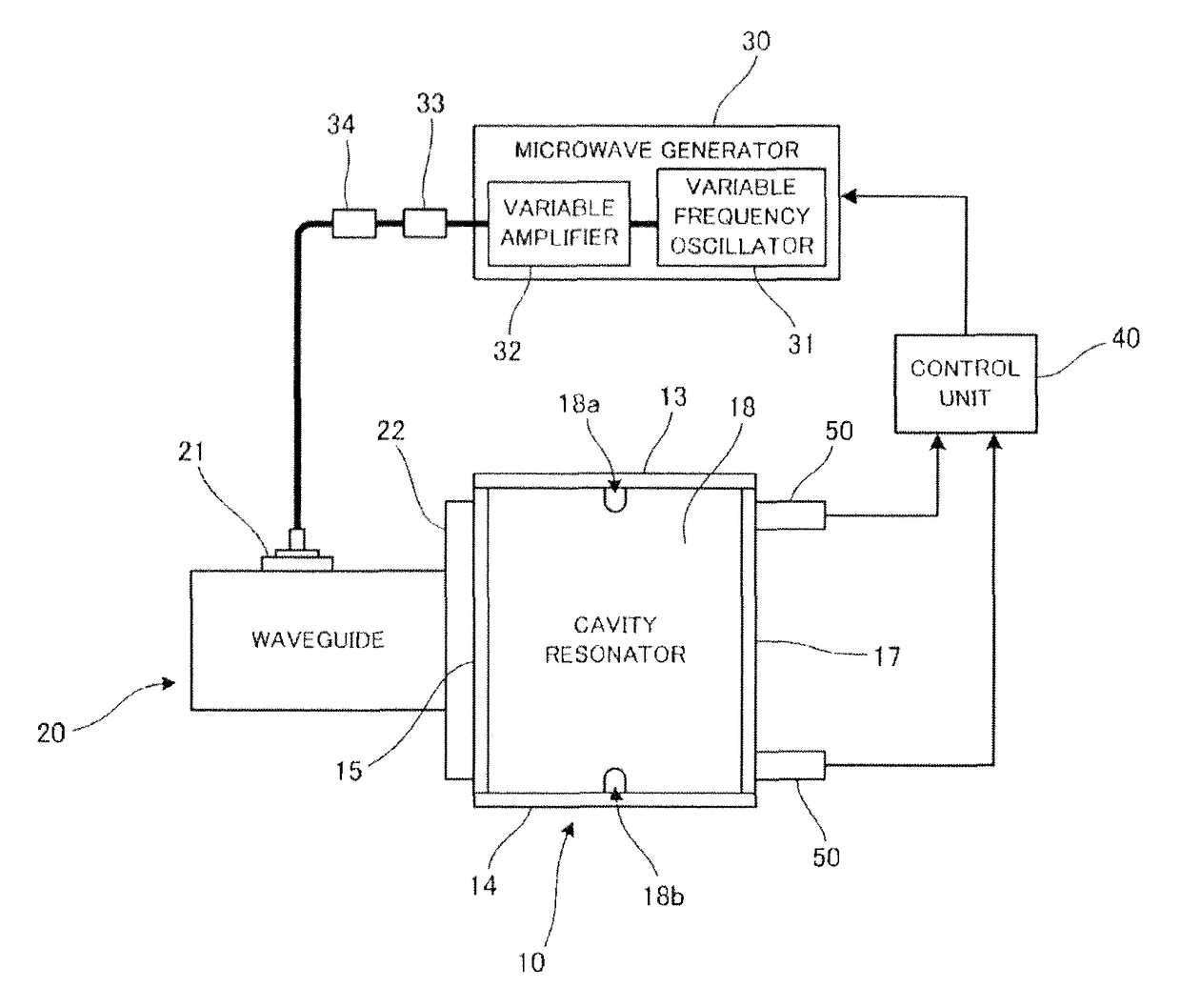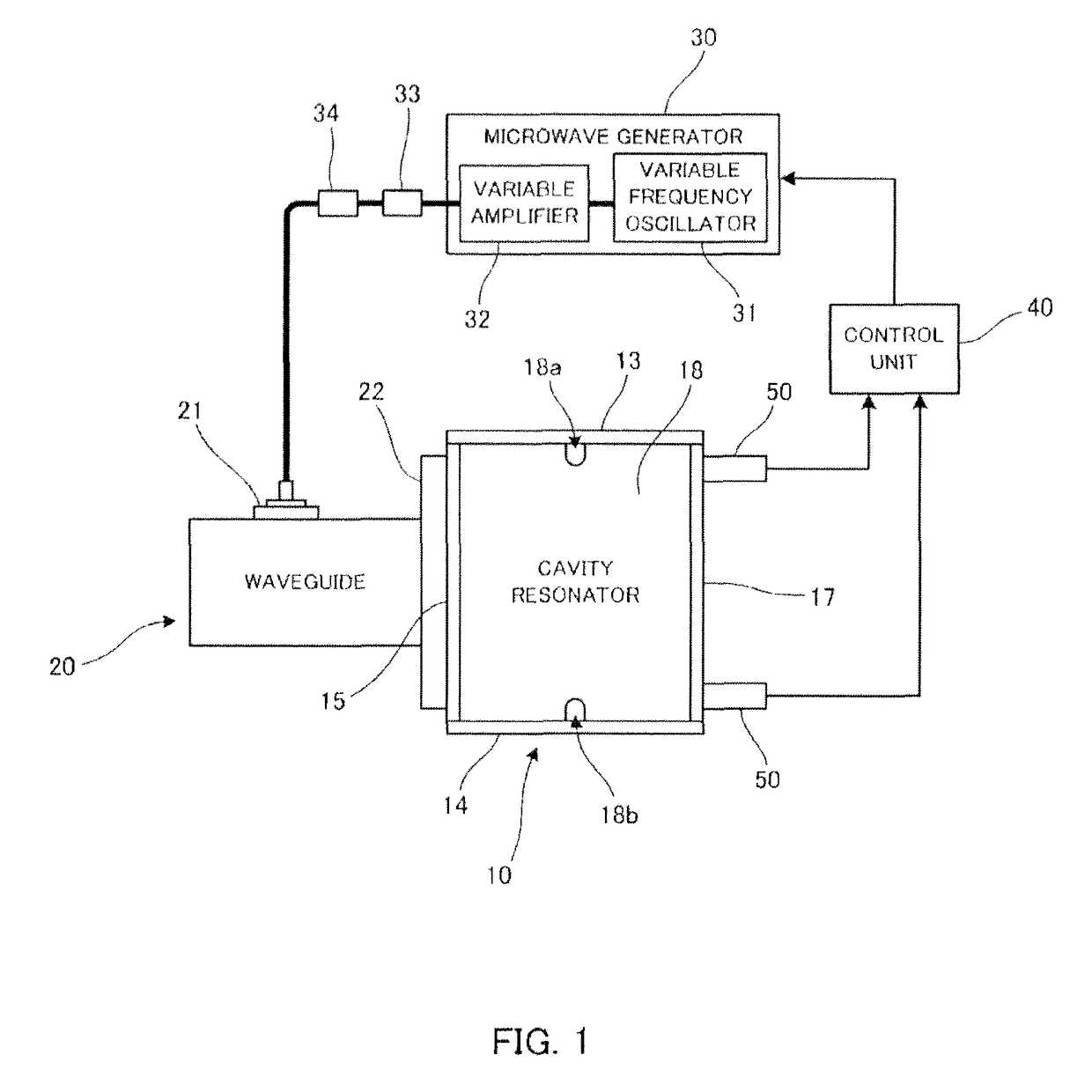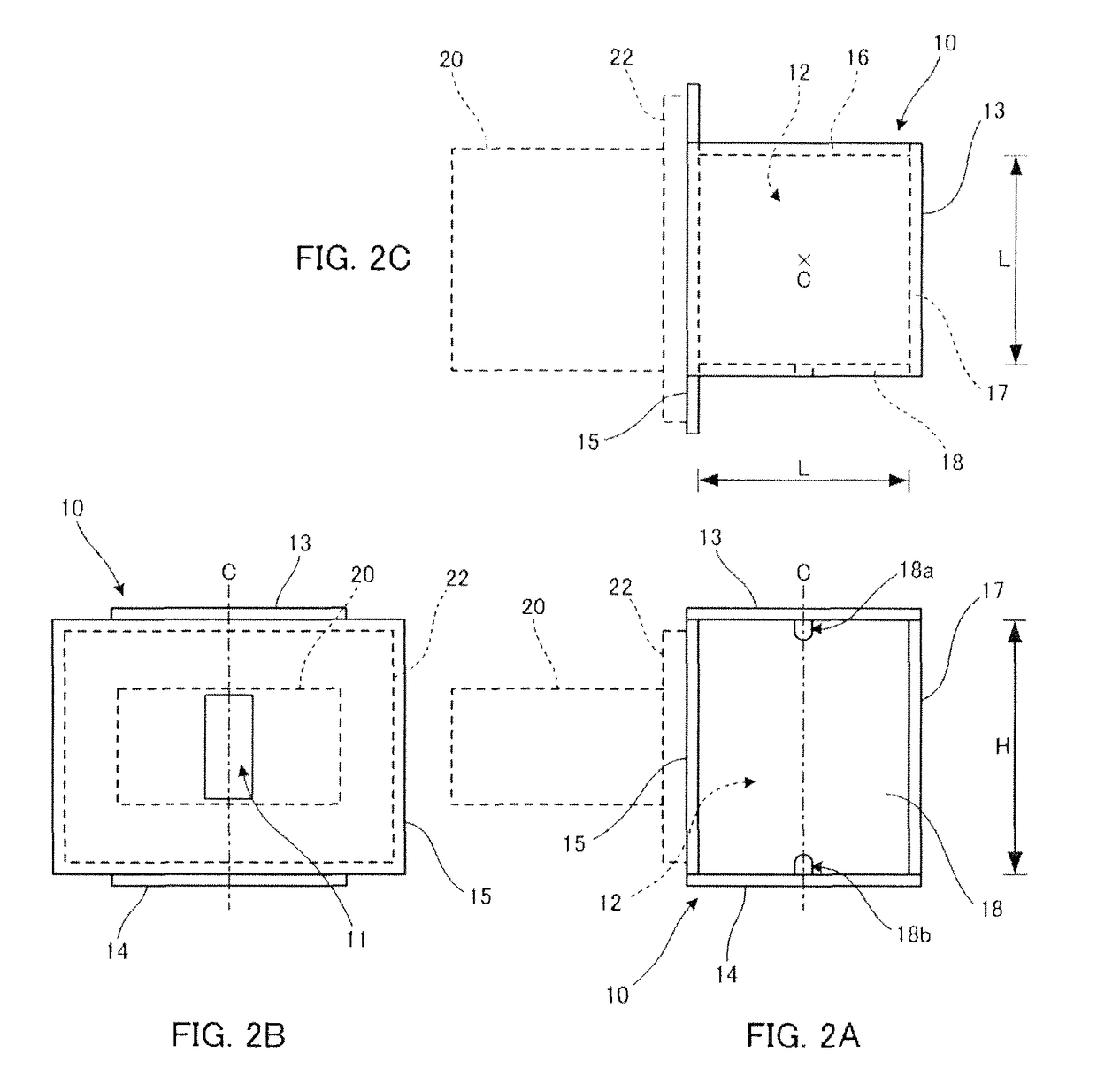Microwave device and flow tube used therein
a flow tube and microwave technology, applied in the field of microwave devices and flow tubes, can solve the problems of limited throughput capacity of the batch processing device, achieve the effects of improving treatment efficiency, increasing liquid volume, and reducing the average strength of electric fields
- Summary
- Abstract
- Description
- Claims
- Application Information
AI Technical Summary
Benefits of technology
Problems solved by technology
Method used
Image
Examples
first embodiment
[0045]the cavity resonator 10 in a microwave device as described above is shown in FIG. 2.
[0046]The cavity resonator 10 in the first embodiment includes top and bottom walls 13, 14 and rectangular sidewalls 15, 16, 17, 18. As shown in FIG. 2, the mutually opposite top and bottom walls 13, 14 arranged one above the other are approximately square. Each of the rectangular sidewalls 15, 16, 17, 18 is fixed to each side of the top and bottom walls 13, 14 by bolts or the like. In the first embodiment, one sidewall 15 shown in FIG. 2B of the four sidewalls 15, 16, 17, 18 has a larger area corresponding to a flange 22 of the waveguide 20 to be connected with the waveguide 20 and enlarged portions thereof protrude from edges of the top and bottom walls 13, 14. Also, one sidewall 18 shown in FIG. 2A of the four sidewalls 15, 16, 17, 18 has flow tube insertion ports 18a, 18b provided at edges abutting the top and bottom walls 13, 14.
[0047]The irradiation chamber 12 is formed inside the cavity ...
second embodiment
[0056]The support rod 61 or 61′ may be formed of alumina (aluminum oxide) whose microwave loss is small and which is superior in thermal conductivity. If the support rod 61 or 61′ is made of alumina, heat of a liquid to be treated present in a downstream portion of the flow tube 60 can be conducted to a liquid to be treated present in an upstream portion of the flow tube 60, and hence a uniform temperature property of the liquid to be treated flowing through the flow tube 60 can be improved because of the good thermal conduction. The temperature of the liquid to be treated becomes higher in the downstream portion than in the upstream portion due to heating involved in microwave irradiation. However, the uniform temperature property required from a chemical reaction can be improved by conducting the heat to the upstream portion via the support rod 61 or 61′. For the support rod 61′ in the second embodiment, a channel 61b′ cutting through in the axial direction is internally formed an...
third embodiment
[0089]a cavity resonator in a microwave device as described above is shown in FIG. 13.
[0090]The cavity resonator 110 in the third embodiment includes two top and bottom walls 113, 114 and rectangular sidewalls 115, 116, 117, 118. As shown in FIG. 13, the mutually opposite top and bottom walls 113, 114 arranged one above the other are approximately square. Each of the rectangular sidewalls 115, 116, 117, 118 is fixed to each side of the top and bottom walls 113, 114 by bolts or the like. In the present embodiment, one sidewall 115 shown in FIG. 13B of the four sidewalls 115, 116, 117, 118 has a larger area corresponding to a flange 122 of the waveguide 120 to be connected with the waveguide 120 and enlarged portions thereof protrude from edges of the top and bottom walls 113, 114.
[0091]The irradiation chamber 12 is formed inside the cavity resonator 110 in the shape of a rectangular solid formed by assembling the top and bottom walls 113, 114 and the sidewalls 115, 116, 117, 118. The...
PUM
| Property | Measurement | Unit |
|---|---|---|
| frequency | aaaaa | aaaaa |
| diameter | aaaaa | aaaaa |
| frequency | aaaaa | aaaaa |
Abstract
Description
Claims
Application Information
 Login to View More
Login to View More - R&D
- Intellectual Property
- Life Sciences
- Materials
- Tech Scout
- Unparalleled Data Quality
- Higher Quality Content
- 60% Fewer Hallucinations
Browse by: Latest US Patents, China's latest patents, Technical Efficacy Thesaurus, Application Domain, Technology Topic, Popular Technical Reports.
© 2025 PatSnap. All rights reserved.Legal|Privacy policy|Modern Slavery Act Transparency Statement|Sitemap|About US| Contact US: help@patsnap.com



